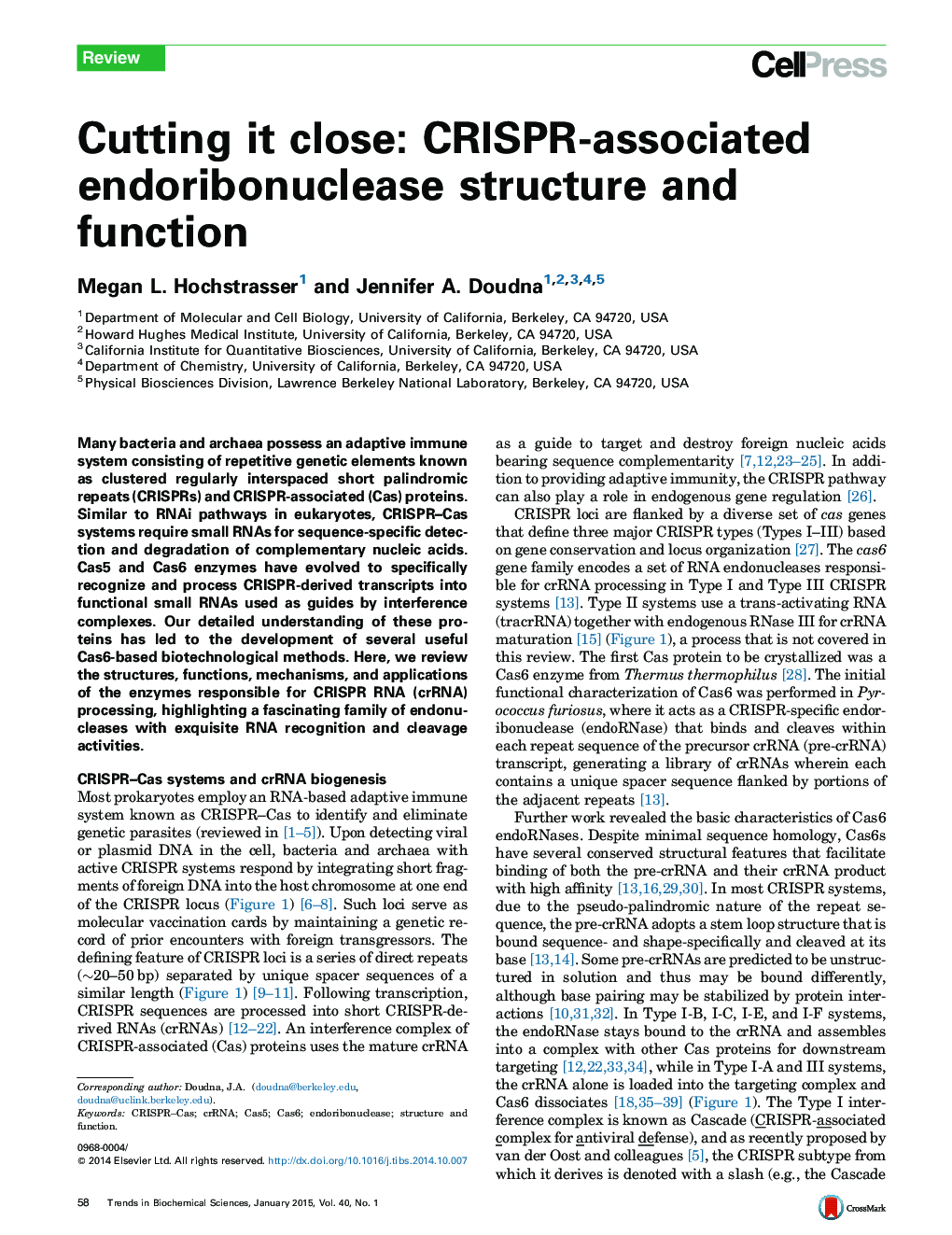| Article ID | Journal | Published Year | Pages | File Type |
|---|---|---|---|---|
| 2030643 | Trends in Biochemical Sciences | 2015 | 9 Pages |
•We define the key structural features shared by CRISPR-associated endoRNases.•We explain how Cas6 enzymes recognize RNA with high affinity and specificity.•We review the cleavage mechanisms of different CRISPR-associated endoribonucleases.•We describe the roles of Cas5 and Cas6 proteins in CRISPR interference complexes.•We discuss future work and development of Cas6-based biotechnological applications.
Many bacteria and archaea possess an adaptive immune system consisting of repetitive genetic elements known as clustered regularly interspaced short palindromic repeats (CRISPRs) and CRISPR-associated (Cas) proteins. Similar to RNAi pathways in eukaryotes, CRISPR–Cas systems require small RNAs for sequence-specific detection and degradation of complementary nucleic acids. Cas5 and Cas6 enzymes have evolved to specifically recognize and process CRISPR-derived transcripts into functional small RNAs used as guides by interference complexes. Our detailed understanding of these proteins has led to the development of several useful Cas6-based biotechnological methods. Here, we review the structures, functions, mechanisms, and applications of the enzymes responsible for CRISPR RNA (crRNA) processing, highlighting a fascinating family of endonucleases with exquisite RNA recognition and cleavage activities.
